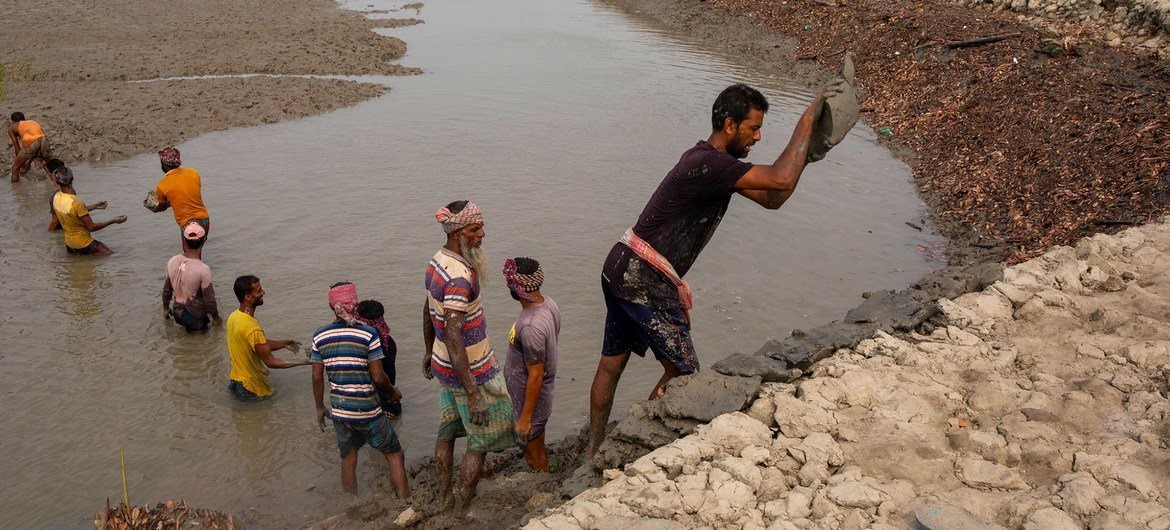
What will happen at COP26? Haven't we had enough meetings on climate change?
During these conferences of the Parties, various "extensions" of the UNFCCC were negotiated to establish legally binding limits on greenhouse gas emissions for individual countries and to identify an enforcement mechanism.
These include the 1997 Kyoto Protocol, which sets emissions limits for developed countries by 2012; And the Paris Agreement, adopted in 2015, in which the world's nations agreed to step up efforts to try to limit the rise in global warming to 1.5°C above pre-industrial temperatures and promote financing for climate action.
So what's striking about COP 26 is that during the meeting, among other issues, delegates will be working on finalizing the "Paris Rulebook," the rules needed to implement the agreement. At this conference, they need to agree on a common time frame on how often to revise and monitor their climate commitments.
Basically, the Paris Agreement sets the ultimate goal of limiting warming to below 2 degrees (ideally 1.5 degrees), but Glasgow is the last chance to meet that goal.
So, this brings us to our original question: Why is this the last chance?
Like a boa constrictor slowly crushing its prey to death, climate change has gone from a disturbing low-level problem to a life-threatening global emergency over the past three decades.
Despite new and updated commitments made by countries ahead of COP 26, and despite the Paris Agreement targets being met, the world is still on track for a dangerous global temperature rise of at least 2.7°C this century.
The science is clear: By the end of the century, a temperature rise of this magnitude could mean a 62 percent increase in the northern Hemisphere's summer scorched by wildfires, a loss of habitat for a third of the world's mammals, and more frequent droughts lasting four to 10 months.
UN Secretary-General Antonio Guterres bluntly calls it a "climate catastrophe," and the deadly extent of it is already being felt in some of the world's most vulnerable regions, such as sub-Saharan Africa and small island states hit by rising sea levels.
Disasters exacerbated by climate change have already displaced and killed millions of people.
In the view of Mr Guterres and hundreds of scientists on the Intergovernmental Panel on Climate Change, the 1.5C warming scenario is "the only viable future for humanity".
Time is running out, and to stand a chance of limiting the rise, the world needs to halve greenhouse gas emissions over the next eight years.
This is a difficult task, and we can only accomplish it if leaders at COP 26 come up with bold, time-bound and forward-thinking plans to phase out coal and transform their economies to achieve the so-called "net zero" emissions target.
Haven't countries like China and the United States already committed to net-zero goals?
The latest UN Emissions Gap Report explains that a total of 49 countries plus the European Union have committed to net-zero targets.
This covers more than half of the world's domestic greenhouse gas emissions, more than half of the world's gross domestic product and one-third of the world's population. Eleven targets are enshrined in law, covering 12% of global emissions.
Sounds good, right? But there's a catch: Many pledges delay action beyond 2030, casting doubt on whether these net-zero pledges can actually be met. Moreover, many of these commitments are "vague" and do not conform to formally submitted national commitments, known as "intended nationally determined contributions."
This again explains why COP 26 is so important. "The time for diplomatic protocol is over - if governments, especially the G-20 governments, do not step up and lead this effort, we are headed for terrible human suffering," Guterres warned at the U.N. General Assembly this week.
No. 41, Beijing East Road, Xuanwu District, Nanjing
Nanjing China